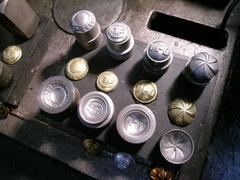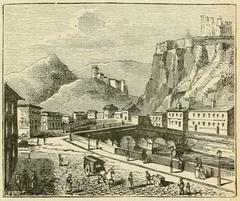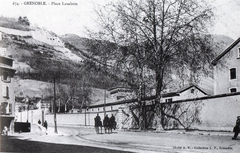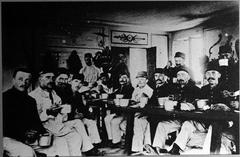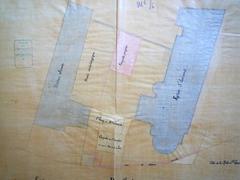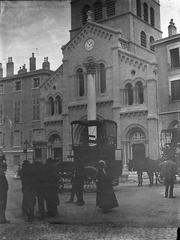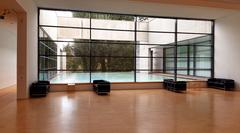Hôtel du Bouchage Grenoble: Visiting Hours, Tickets & Historical Site Guide
Date: 14/06/2025
Introduction
Located in Grenoble’s atmospheric historic center, the Hôtel du Bouchage is a prestigious example of the city’s aristocratic heritage and classical French architecture. While this 17th- or 18th-century hôtel particulier is privately owned and not open for regular public visits, it offers a rare glimpse into Grenoble’s past during special cultural events, such as the annual Journées du Patrimoine (European Heritage Days). This detailed guide explores the Hôtel du Bouchage’s origins, architectural features, protected status, visiting options, and practical tips for combining your visit with other top historical attractions in Grenoble (Monumentum; Grenoble Tourisme; Mapcarta).
Table of Contents
- Introduction
- Historical Background
- Architectural Features & Heritage Status
- Cultural Significance in Grenoble
- Visiting Hours, Tickets & Accessibility
- How to Get There & Visitor Facilities
- Nearby Historical Attractions
- Frequently Asked Questions (FAQ)
- Practical Tips for Your Visit
- Conclusion & Further Resources
- References
Historical Background
The Hôtel du Bouchage is emblematic of the wave of grand urban mansions—hôtels particuliers—that were constructed in Grenoble during the city’s ascendancy in the 17th and 18th centuries. These residences, often built for local magistrates, nobility, or influential families, showcased the social prominence and refined tastes of Grenoble’s elite during the Ancien Régime (Monumentum).
Although the name “Hôtel du Bouchage” is more widely recognized in Parisian contexts, Grenoble’s own Hôtel du Bouchage is a classified Monument Historique, reflecting both its architectural merit and its role in the development of the city’s urban landscape. Its presence is a testament to the transformation of Grenoble from a fortified medieval town to a thriving regional capital.
Architectural Features & Heritage Status
Urban Context & Location
The Hôtel du Bouchage is located at 5 Place Saint-André, within Grenoble’s old town, a district renowned for cobbled streets and a high concentration of preserved heritage buildings. The mansion is surrounded by landmarks like the Place Grenette, Jardin de Ville, and the Collégiale Saint-André, making it a highlight for walking tours and heritage enthusiasts (Mapcarta).
Architectural Characteristics
- Typology: Classic “hôtel particulier” with a restrained, symmetrical façade, elegant stonework, and a private inner courtyard.
- Protected Elements: The courtyard façade, listed as a Monument Historique since 1989, features classical ornamentation and wrought iron balconies (POP Culture).
- Interior: While detailed surveys are not widely published, period details and original materials have been preserved due to its protected status.
Heritage Protection
As a Monument Historique, the Hôtel du Bouchage benefits from stringent legal protections overseen by French heritage authorities. Restoration and maintenance work must adhere to strict guidelines, ensuring the building’s authenticity and safeguarding it for future generations (Monumentum).
Cultural Significance in Grenoble
The Hôtel du Bouchage is an enduring symbol of social transformation in Grenoble, representing the rise of urban aristocracy and the city’s integration into the broader currents of French history from the Renaissance through the Enlightenment. While specific details about its original owners are limited, such mansions typically housed influential parliamentarians, military officers, or wealthy merchants whose patronage helped shape Grenoble’s civic and cultural life (Grenoble Tourisme).
Its proximity to other significant hôtels particuliers and civic landmarks highlights its role in the architectural and social tapestry of Grenoble.
Visiting Hours, Tickets & Accessibility
Opening Times
- General Access: Hôtel du Bouchage is privately owned and not open to the public on a daily basis.
- Special Openings: The building opens its doors for guided tours during special events, notably the annual Journées du Patrimoine (European Heritage Days) each September. Dates and times vary; consult the Grenoble Tourisme site or the Monumentum page for current information.
Tickets
- Exterior Viewing: Free and accessible from Place Saint-André.
- Interior Tours: Generally free during heritage events; some guided tours may require advance booking or a small fee.
Accessibility
- Physical Access: The site is centrally located in a pedestrian-friendly zone, easily reached by foot, tram, or bus. The historic building’s interior may have limited accessibility for those with mobility challenges; contact the tourism office for details.
- Guided Tours: Offered during heritage events, sometimes in English by request.
How to Get There & Visitor Facilities
Directions
- Public Transport: The nearest tram stops are serviced by lines A and B, with a 5-minute walk to Place Saint-André.
- By Car: Paid parking is available at Parking Victor Hugo or Parking Philippeville. Be aware of Grenoble’s Low Emission Zone (ZFE) restrictions.
- On Foot or By Bike: The city center is compact and ideal for walking or cycling, with bike-share stations nearby.
Visitor Amenities
- Restrooms: Available in adjacent city parks and public squares.
- Dining & Shopping: Numerous cafés, restaurants, and boutiques surround Place Saint-André.
- Wi-Fi: Free public Wi-Fi is available in many areas of the city center.
Nearby Historical Attractions
- Place Saint-André: Historic square with the Collégiale Saint-André and lively cafés (Planetware).
- Vieille Ville (Old Town): Picturesque pedestrian streets, Place Grenette, Place Notre-Dame, and the Cathédrale Notre-Dame de Grenoble (Cityzeum).
- Bastille Fortress & Téléphérique: Panoramic views accessible by cable car (France Voyager).
- Musée de Grenoble: Renowned art collections from antiquity to the modern era (France Voyager).
- Jardin de Ville & Parc Paul Mistral: Lush green spaces perfect for relaxing strolls.
Frequently Asked Questions (FAQ)
Q: What are the Hôtel du Bouchage visiting hours?
A: Regular visits are not available; access is limited to special events like European Heritage Days. Check Grenoble Tourisme for updates.
Q: Is there an entrance fee?
A: Exterior viewing is free; guided tours during events are usually free or may require a nominal fee.
Q: Are guided tours available?
A: Yes, typically during heritage events. Tours may be in French, with English options on request.
Q: Is Hôtel du Bouchage wheelchair accessible?
A: Accessibility is limited due to the historic structure. Contact the tourism office for details.
Q: What attractions are nearby?
A: Place Saint-André, Collégiale Saint-André, Vieille Ville, Bastille Fortress, and Musée de Grenoble.
Practical Tips for Your Visit
- Plan Ahead: Check event calendars and official tourism sites for special opening dates.
- Best Time to Visit: Late spring to early autumn (May–September) offers pleasant weather and longer daylight.
- Photography: The façade and surrounding square are ideal for photos, especially during the morning or late afternoon.
- Language: French is predominant, but tourist staff often speak English. Learning a few phrases can enhance your visit.
- Transport: Use the TAG tram or Métrovélo bike-share for easy access.
- Local Etiquette: Respect signage, especially during guided tours or special events.
Conclusion & Further Resources
The Hôtel du Bouchage remains one of Grenoble’s most distinguished historical sites, reflecting the city’s aristocratic legacy and architectural refinement. Though interior access is rare, its stately façade and location in the heart of Grenoble’s lively historic district make it a rewarding stop for cultural explorers. Combining a visit with nearby attractions like the Bastille Fortress and Musée de Grenoble provides a deeper appreciation of the city’s rich heritage.
For real-time updates, event schedules, and interactive guides, download the Audiala app and consult the official Grenoble tourism resources.
References
- Monumentum – Hôtel du Bouchage, Grenoble
- POP Culture – Monument Historique Listing
- Grenoble Tourisme – Architecture & Heritage
- France Voyager – Best Things to Do in Grenoble
- Mapcarta – Hôtel du Bouchage
- Cityzeum – Grenoble Guide
- Planetware – Grenoble Tourist Attractions
For more travel tips and in-depth cultural guides, see our articles on Grenoble’s Museums and Historical Walking Tours in Grenoble.
Images and interactive maps can enhance your planning and visit experience.
